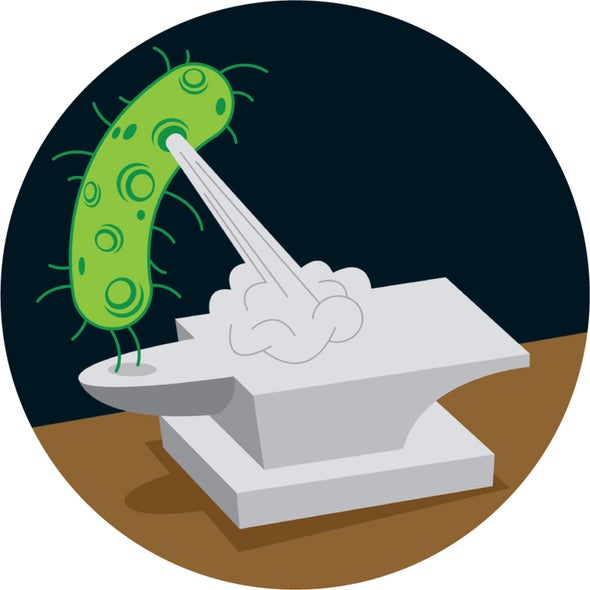Scientists have known for more than a century that some bacteria can breathe anaerobically, or without oxygen, but only in recent decades have researchers started exploiting this property to fabricate useful materials. Now electrical engineers have found a way to use such bacteria to manufacture an up-and-coming two-dimensional material called molybdenum disulfide (MoS2), which can form a sheet just a few atoms thick and holds promise for future electronics. The new finding, published in Biointerphases, could help avoid a daunting synthesis process that requires a harsh environment.
“Graphene is the breakout superstar of the two-dimensional materials,” says Shayla Sawyer, an electrical engineer at Rensselaer Polytechnic Institute and a senior author of the paper. But MoS2 is “different in that it brings a new ‘skill.’” Graphene and MoS2 are both strong and flexible, and they are useful for building futuristic sensors and energy-harvesting systems. Graphene is an electrical conductor, however, whereas MoS2 is a semiconductor—a substance whose conductivity can be manipulated by outside stimulation, such as light.
MoS2 is “also a little bit more chemically versatile,” Sawyer says. The compound's surface can easily be altered to help capture microbes, for example. But it is difficult to synthesize; the process can involve temperatures of 200 to 500 degrees Celsius and a crushing 10 times atmospheric pressure, says Zhi Li, a materials engineer at the University of Alberta, who was not involved in the study.
To circumvent this problem, Sawyer and her colleagues devised a new synthesis technique by capitalizing on Shewanella oneidensis's anaerobic respiration. When this bacterium breathes air, it eventually transfers electrons to oxygen atoms. But in an anaerobic environment, the same organism can transfer electrons to particular metal compounds instead, says James Dylan Rees, a bioelectrical engineer at Rensselaer and the paper's first author. After “some trial and error” to determine the best metal compounds to use, Rees says, the team placed them with the bacteria in a mostly airless bottle. The bacteria then delivered their electrons to the compounds during respiration, creating MoS2 nanoparticles as a by-product over the course of two weeks.
Li says he likes how the new method suggests a sustainable way to make MoS2 at room temperature. If it is to be used reliably in electrical devices such as sensors and batteries, however, he notes that it is important to be able to control the uniformity of the material's repeating pattern of atoms. Sawyer says her team still needs to work on this aspect of the process—a challenging task when dealing with living bacteria.
But the future for synthesizing materials using bacteria is bright, she adds: “We're just really scratching the surface of what's possible.”

